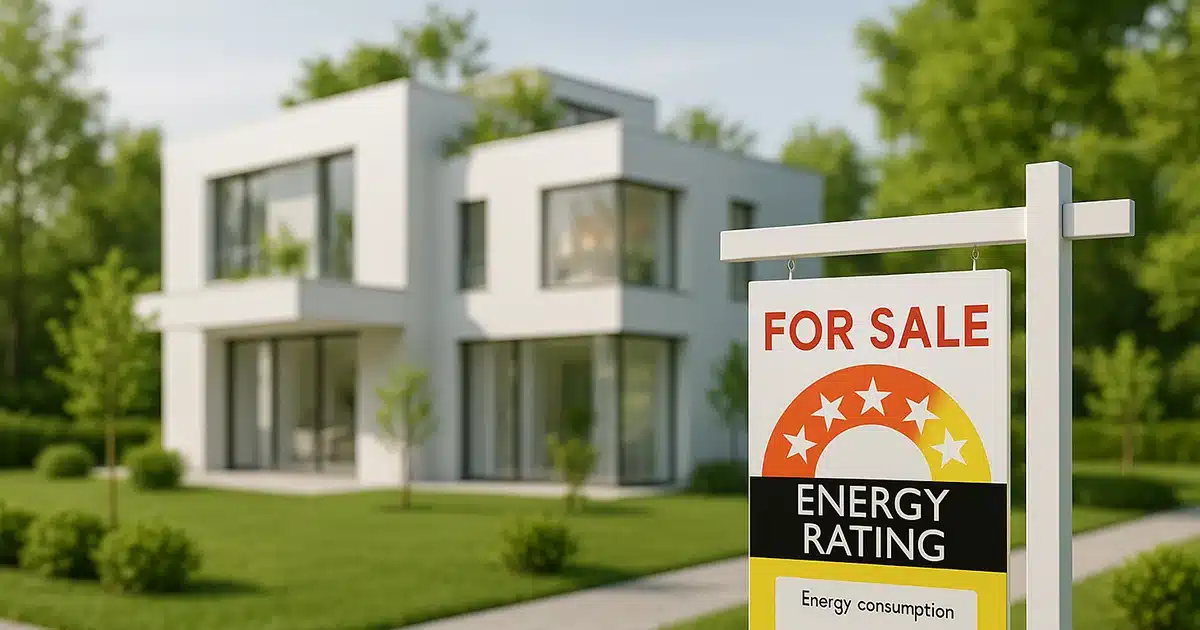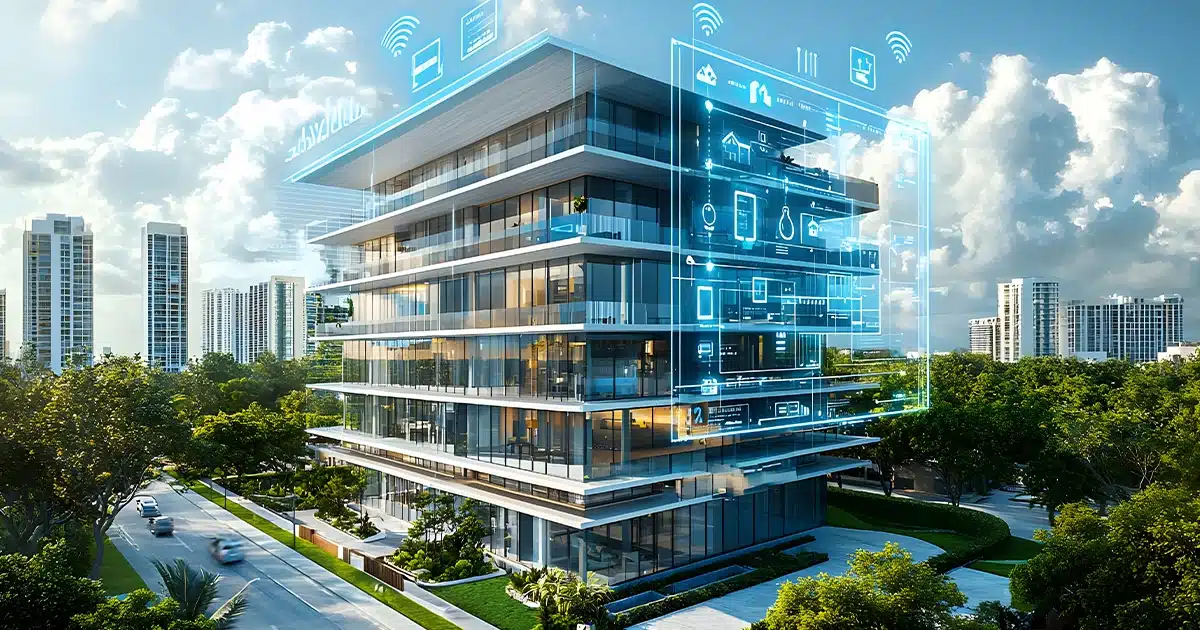For modern businesses, sustainability is no longer a “nice to have” – it’s a commercial imperative. Building professionals, in particular, are under increasing pressure from regulators, investors and eco-conscious consumers to operate more responsibility and prioritise sustainable outcomes across every project stage.
Beyond meeting compliance standards, energy sustainability is also rapidly becoming a lever for smarter, more profitable business.
By integrating energy efficiency into the building design process and advising clients on sustainable practices you can reduce environmental impact, future-proof buildings, lower long-term running costs and deliver higher value assets.
Let’s explore how embedding energy sustainability into your work can give you a commercial edge, while supporting compliance, resilience and long-term success in a changing regulatory landscape.
What is Energy Sustainability in Business?
Energy sustainability in a commercial context is about using energy resources efficiently and responsibly to support long-term business growth, while reducing environmental impact. For those working in the construction environment, this means designing, constructing or certifying buildings that minimise energy waste, incorporate clean technologies and deliver lasting value.
Key components of energy sustainability can include:
- renewable energy integration – such as solar, wind, or Power Purchase Agreements (PPAs)
- energy efficiency upgrades – in areas like lighting, HVAC, insulation and building systems
- responsible energy procurement and transparent reporting – aligned with sustainability goals.
For clients, these steps aren’t just good practice – they’re increasingly expected by stakeholders under ESG (environmental, social, and governance) commitments. Energy forms a core part of the “E” in ESG, with regulators and investors looking closely at how commercial properties manage their energy footprint.
By embedding energy sustainability into your building projects, you can support clients’ ESG objectives, while helping them cut costs, reduce emissions and strengthen long-term performance.
The Business Case for Energy Sustainability
Building energy sustainability into your projects isn’t just good for the environment – it’s good for business. Whether you’re advising clients, designing systems or supporting compliance, understanding the commercial upside of energy-smart choices gives you and your clients several advantages.
1. Operational Cost Savings
Energy-efficient buildings cost less to run. Upgrading HVAC systems, LED lighting, insulation and smart building controls can deliver substantial savings on energy bills over time. When paired with renewables (like solar energy systems or PPAs), the result is even greater financial benefit, often with attractive long-term ROI.
For your clients, this means more predictable energy costs and less exposure to volatile energy prices. For building professionals, it’s an opportunity for you to deliver designs and certifications that genuinely add value over the building’s lifecycle.
2. Competitive Advantage and Brand Value
Sustainability isn’t just a behind-the-scenes measure – it’s a visible, marketable asset. Today’s consumers, particularly Gen Z and Millennials, actively support businesses that demonstrate environmental responsibility. The same trend is echoed by investors, who are placing greater weight on sustainability credentials.
When you integrate sustainable practices into your work, you can help clients strengthen their brand, boost loyalty and appeal to a growing market segment that sees value in environmental leadership.
3. Regulatory Compliance and Risk Mitigation
Australia’s regulatory landscape is shifting fast. National and state-level requirements, including energy efficiency provisions under the National Construction Code (NCC), along with frameworks like NABERS, BASIX and local planning requirements, continue to raise the bar.
Proactively meeting (or exceeding) these standards can mitigate the risk of non-compliance penalties and protect clients’ reputations. Early adoption of energy sustainability measures can help to future-proof developments against tightening regulations and changing community expectations.
4. Attracting Investment and Talent
Sustainability now plays a critical role in corporate valuation. Ethical investors are increasingly directing funds toward businesses with strong ESG performance – and buildings with green credentials often command higher rents, lower vacancy rates and increased asset value.
From a workforce perspective, today’s talent, especially in design and construction, is also looking for meaning in their work. Demonstrating a commitment to energy-efficient operations and renewable energy for business can help your clients stand out to jobseekers who care about corporate values and purpose, not just pay.
How to Integrate Energy Sustainability into Your Business
For professionals designing, certifying or managing commercial buildings, integrating energy sustainability can set your projects and business apart. Here’s how to take a structured, practical approach.
1. Conduct a Sustainability Audit
Start by evaluating your current energy use. Where are the inefficiencies – do you have outdated lighting, an underperforming HVAC, or poor insulation? A thorough audit helps you benchmark against industry standards, identify waste and find high-impact opportunities. If you’re working on behalf of clients, this also builds a strong case for cost-effective improvements.
2. Set Clear Energy Goals
Without clear targets, it’s difficult to measure success. Set SMART goals (specific, measurable, achievable, relevant, time-bound) focused on areas like carbon reduction, total energy consumption or proportion of energy sourced from renewables.
Make these goals visible, internally to your team, and externally to clients, partners and stakeholders. Clear targets help drive transparency, accountability and momentum.
3. Improve Energy Efficiency
Improving energy performance starts with building envelopes and core systems. Retrofitting older properties with insulation, LED lighting, efficient HVAC systems and smart controls can significantly reduce operational energy demand.
Consider taking advantage of local/state support. NSW, for instance, offers state-based energy upgrade programs that can reduce upfront costs for eligible improvements
4. Adopt Renewable Energy
Supplementing energy use with renewables is a powerful step. On-site solar panels, small-scale wind systems or PPA renewable energy options help lower emissions and reduce reliance on grid power.
Explore available support such as government incentives, funding models (e.g. green loans) or business energy grants that make these solutions more financially accessible.
5. Engage Staff and Stakeholders
Energy sustainability works best when it’s a shared commitment. Build internal awareness with staff training, incentives for energy-saving behaviours and visible sustainability initiatives.
At the leadership level, make sustainability a standing agenda item. When buy-in comes from the top, it can be far more achievable to integrate across departments.
6. Monitor and Report Progress
Track your performance using internal KPIs or formal ESG reporting frameworks. Regular measurement helps identify where you’re succeeding, as well as areas for improvement.
Sharing results publicly, through client updates, stakeholder reports or annual sustainability statements supports accountability and builds long-term trust and credibility.
Real-World Examples: Companies Driving Commercial Success Through Energy Sustainability
Many leading businesses, from global brands to Australian commercial buildings, are proving energy sustainability can do good. But it’s also a strategic move that drives measurable business value.
1. Unilever
Unilever reports its purpose-led, sustainability-focused brands accounted for 75% of its business growth in recent years. These brands are also growing faster than the rest of its portfolio, showing how environmental leadership supports commercial momentum.
2. Patagonia
Outdoor apparel company Patagonia has built a loyal global customer base through strong environmental values and sustainable supply chains, which contribute to long-term brand resilience.
3. Lush
Cosmetics brand Lush prioritises ethical sourcing, packaging-free products and low-energy operations. The result? A passionate customer base and strong market differentiation.
4. Commonwealth Bank
In Australia, businesses are demonstrating the value of energy-smart buildings. Commonwealth Bank Place in Sydney achieved a 6-star NABERS Energy rating by combining solar generation, advanced metering and energy-efficient HVAC upgrades. These improvements translated to lower operating costs and enhanced asset value – desirable outcomes for owners and tenants.
For professionals designing buildings, guiding projects through compliance pathways or consulting on upgrades, these examples highlight a clear message: energy sustainability is a pathway to stronger business performance.
Overcoming Challenges to Energy Sustainability
While the benefits of energy sustainability are clear, many businesses still face real-world hurdles when trying to put it into practice. The good news is this: most of these challenges can be managed (or even turned into opportunities) with the right approach.
Upfront Costs
Upfront costs remain one of the biggest barriers, particularly for retrofits, obtaining higher-performing building materials (e.g. insulation, glazing) or investing in smart HVAC or lighting systems.
But considering how costs can be mitigated through things like grants, green loans or energy upgrade incentives, to reduce financial pressure and improve ROI timelines.
Technical knowledge gaps
Not every team has in-house expertise in sustainable design or energy systems. Bringing in external consultants or investing in internal training can help bridge the gap, empowering your team to make informed decisions, from design through to certification.
Navigating Regulatory Complexity
Navigating regulations (NCC energy provisions, NABERS, BASIX) can feel overwhelming. It’s possible to stay ahead of policy updates and work with trusted experts who understand how to align sustainability with evolving compliance expectations.
Grid Infrastructure Limits
In some regions, grid infrastructure limitations can make it difficult to access reliable clean energy. Solutions like on-site generation, battery storage or hybrid systems can help reduce reliance on external supply and improve long-term resilience.
The most important takeaway: You don’t need to overhaul everything at once. Start with small, high-impact changes, then scale your efforts over time. Incremental progress can add up to real, measurable results.
Ready to Make Energy Sustainability Work for Your Business?
Energy sustainability goes beyond environmental responsibility – it’s a smart business strategy that delivers immediate and long-term rewards. By focusing on energy-efficient solutions, renewable energy and supporting compliance, the benefits are clear. You’ll be better positioned to unlock gains in operational efficiency, brand loyalty, risk mitigation and profitability.
If your business is ready to take the next step toward sustainability, talk to our team today about tailored energy solutions that deliver results.




